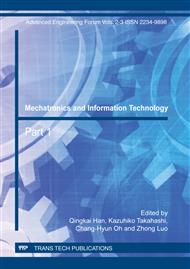p.69
p.74
p.80
p.85
p.91
p.96
p.105
p.111
p.117
Development of a Neural Network Based Q Learning Algorithm for Traffic Signal Control
Abstract:
As one kind of reinforcement learning method, Q learning algorithm has already been proved to achieve many significant results in traffic signal control area. However, when the state of Markov Decision Process is very big or continuous, the computation load and the memory load will become very big and can not be solved then. Therefore, this paper proposed a neural network based Q learning algorithm to solve this problem known as “Curse of Dimensionality”. This new method realized generalization of conventional Q learnig algorithm in huge and continuous state space as neural network is a very effective value function approximator. Experiment has been implemented upon an isolated intersection and simulation results show that the proposed method can improve the traffic efficiency significantly than the conventional Q learning algorithm.
Info:
Periodical:
Pages:
91-95
Citation:
Online since:
December 2011
Authors:
Keywords:
Permissions:
Share:
Citation:


